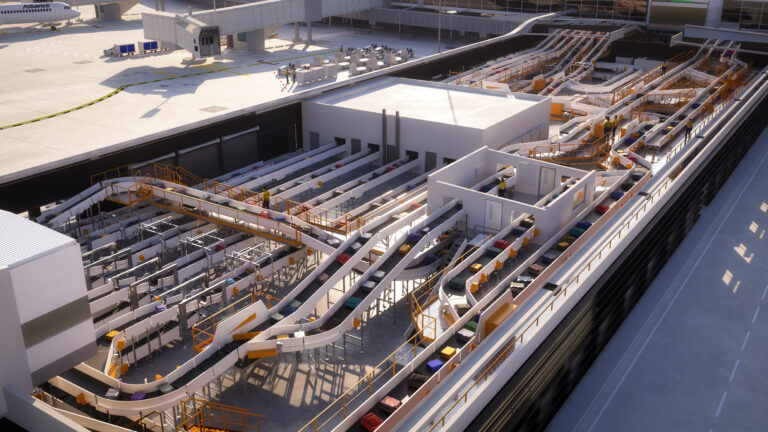Brisbane Airport began the transformation of its domestic terminal in October 2023, the first step in its wider A$5bn (US$5.3bn) Future BNE investment program that encompasses some 150 projects.
Alongside upgrades to the international terminal and the continued planning of the new Terminal 3 Precinct, a new baggage system in the domestic terminal is to be installed as part of the Future BNE project. The current baggage system is made up of three separate systems that were originally installed in the 1980s. The new system will feature upgraded security, modern bag-tag readers and operate more sustainably by shutting segments of the system down when there are no bags to process. Alstef and Brock Solutions have been awarded the contract to build the new baggage handling system.
PTT recently sat down with Helder Lira, Alstef Group project director – Brisbane Airport, to find out more about the project and the incoming technology.
What will the key features of the overhauled domestic terminal baggage handling system be?
The redesigned domestic terminal baggage handling system is set to adhere to the latest screening standards by consolidating various bag operations and creating a specialized environment for advanced screening procedures. Additionally, significant enhancements in redundancy will provide improved bag routing options, thereby boosting operational efficiency and resilience.
 What’s new and innovative about the technology in Alstef’s system for BNE?
What’s new and innovative about the technology in Alstef’s system for BNE?
An essential highlight of the upgraded system is the integration of IE5 energy-efficient motors, complemented by the adoption of cutting-edge industrial control protocols. This dual innovation represents a notable advancement in energy conservation and refined operational control within BNE’s baggage handling infrastructure.
What advantages will all these features bring to BNE? What are the goals of the project?
The benefits arising from these innovations are diverse. The enhanced baggage system will foster greater integration and connectivity, while the advanced control solutions will furnish the operations team with valuable data. The project’s primary objectives are focused on refining operational efficiency, streamlining procedures, and enriching the overall passenger experience.
What steps have been taken to enable the operation of the terminal during this project?
Executing such a substantial project without disrupting terminal operations presents a notable challenge. However, meticulous planning has been employed to ensure uninterrupted terminal functionality during the upgrade. Nearly 100 thoughtfully devised phases have been crafted to sustain continuous operations throughout the transformation. Leveraging Alstef Group’s extensive experience in upgrading operational airports, strategic scheduling of pre-work and changeovers during non-operational hours has been prioritized to minimize disruptions.
What other challenges have you encountered when creating the system? How have they been overcome?
Working within the existing operational framework has been a significant challenge in developing the system. Yet, innovative strategies and careful planning have enabled the team to navigate these challenges effectively, ensuring minimal disruption to ongoing operations while achieving the project’s objectives.
To read more on the Future BNE program in our news story in the latest issue of Passenger Terminal World, click here.
And, to find out more about the latest developments at Brisbane Airport, click here.

